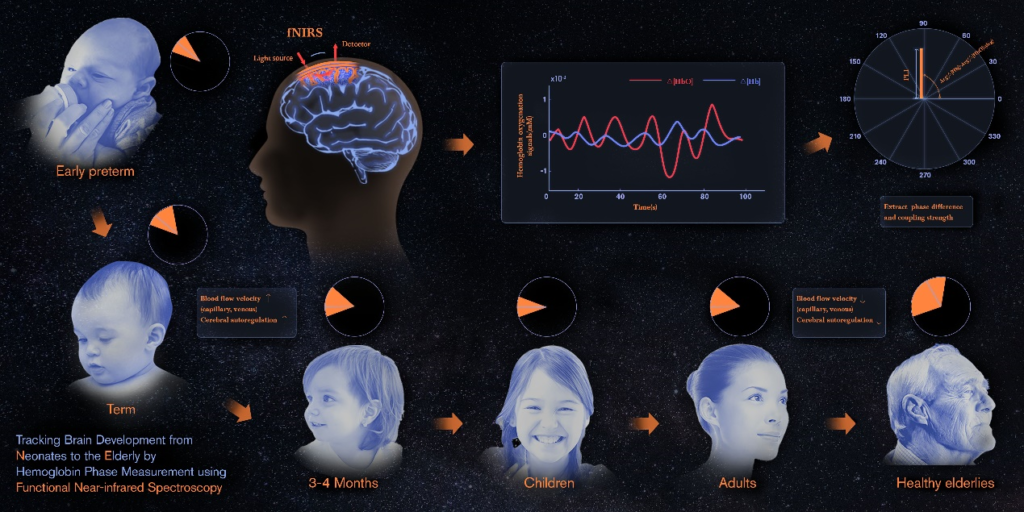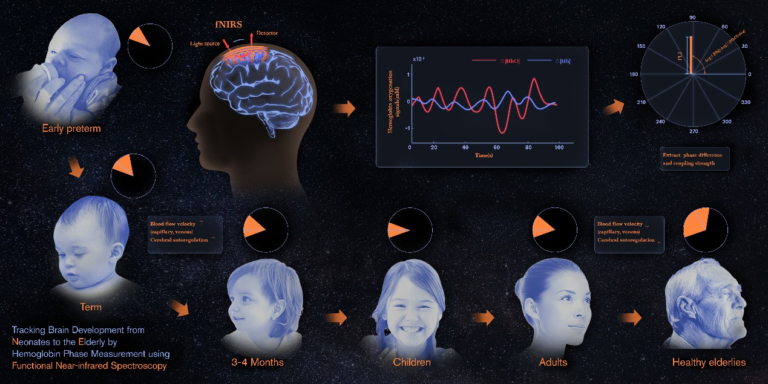
The paper presents a study of neurovascular and metabolic development from newborns to elderly. The phase and coupling of oxy-hemoglobin (∆[HbO]) and deoxy-hemoglobin (∆[Hb]) concentration changes measured by functional near-infrared spectroscopy (fNIRS) were employed to track this biological and neurological processes. The phase difference increases from newborns to 3-4 months-olds babies, then persists throughout adulthood until finally being disrupted at the old age. The children’s phase-locking index (PLI) is the highest, followed by that of adults. These two groups’ PLI are significantly higher than those of infants and the elderly (p<0.001). A hemodynamic model was used to explain the observations and found close associations with cerebral autoregulation and speed of blood flow. Lastly, the effects of anti-phase trend of ∆[HbO] and ∆[Hb] with the influence of noise were analyzed. The results showed that the random noise is a non-negligible factor in calculation the phase difference and coupling strength in fNIRS data analysis. In summary, we demonstrate that the phase-related parameters measured by fNIRS can be used to study the brain and assess brain health throughout the lifespan.

